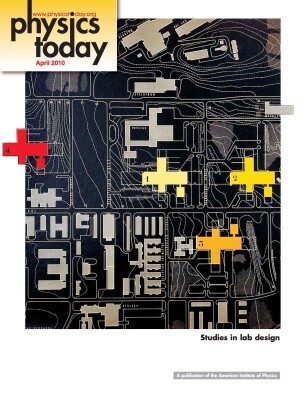National Science Board warns of slide in US competitiveness
DOI: 10.1063/1.3397036
Following up on its January report documenting a surge of high-tech investments and competencies in China and other Asian nations, the National Science Board has issued a new report, Globalization of Science and Engineering Research. It recommends that a new cabinet-level council be formed to take stock of US innovation and competitiveness, and calls for the Office of Science and Technology Policy (OSTP) to lead a government-wide evaluation of US R&D programs against those of other nations. “The US government must be attentive to developments in S&E capacity around the world and take proactive steps to maintain our nation’s competitive strength,” said Steven Beering, NSB chairman.
In a third recommendation, the board instructs NSF to focus its funding on research that is “truly transformational” and to achieve that goal by adjusting as necessary the criteria used to rank grant proposals. As the only federal sponsor of nonmission research, says the Globalization report, NSF is obligated to “maintain its emphasis on the funding of basic, peer-reviewed research across the fields of science and engineering, with special attention to transformative S&E research in order to ensure that the U.S. remains a world research leader.” The NSB is NSF’s governing board.
Louis Lanzerotti, chair of the NSB Committee on Science and Engineering Indicators, said the board will soon establish a task force of its members to ensure that its instructions to NSF are implemented. The Globalization report defines transformative research as “revolutionary advancements, [made] through the application of radically different approaches or interpretations that result in the creation of new paradigms or new scientific fields.”
Globalization is a policy companion piece to the NSB’s Science and Engineering Indicators 2010, a compilation of statistics and analysis that highlights rapid gains in foreign S&E investments, human capital, research infrastructure, and high-tech (see Physics Today, March 2010, page 30
Maintaining US leadership
The cabinet-level council called for in Globalization would determine the critical research fields in which the US should retain its world leadership. Other issues for the council’s consideration are ensuring that the US economy benefits from R&D performed abroad by US-based multinational firms, developing cooperative relationships between US and foreign sponsors of R&D to secure continued US technical growth and strength, and safeguarding US intellectual property. Lanzerotti, a physics professor at the New Jersey Institute of Technology, said the benchmarking process called for in Globalization would help verify that federal funding for research is “wisely invested to ensure US leadership in science and technology.”
Arden Bement, outgoing NSF director, noted that the postwar period of US dominance in nearly every field of science has ended. “It’s quite possible that in many cases, we could be the coleader, and in some cases we could be the fast-follower,” he mused at the report’s 19 February unveiling, adding, “The importance of that realization is that we have to stay connected with the rest of the world.”
In the Globalization report, the NSB urges the Obama administration to heed a provision in the 2008 America COMPETES Act instructing the White House to establish a “council on innovation and competitiveness” to be chaired by the secretary of Commerce and comprising more than a dozen other cabinet-ranking members. The law charges that council with developing an “innovation agenda” and recommending policies for maintaining US leadership in science and technology. Although the legislation called for the new council to be organized apart from the framework of the National Science and Technology Council, President George W. Bush formally designated a committee of the NSTC to serve as the new council.
Lanzerotti said that the NSB would be happy if the Obama administration chose to follow its predecessor with regard to the placement of responsibilities for the council and “would only encourage that the [NSTC committee] be strongly engaged in executing this recommendation.”
Current benchmarking
White House science adviser and OSTP director John Holdren agreed that international benchmarking in key fields is useful, and he noted that the President’s Council of Advisors on Science and Technology is currently reviewing the National Nanotechnology Initiative, which involves more than two dozen federal research and regulatory agencies. Holdren said PCAST’s review will report on how the US is doing relative to other major economies as measured by R&D investments, patents, publications, and other benchmarks.
Science agencies often contract with outside organizations, such as the World Technology Evaluation Center, that perform benchmarking, Holdren said. In recent years WTEC has carried out agency-sponsored international assessments in a broad range of S&T areas, including flexible hybrid electronics, simulation-based engineering and science, and the brain-computer interface. The government also works with consulting firms that offer regional expertise, such as the Asian Technology Information Program, which assesses research and technology trends and policies in the Far East. Although agencies often initiate such benchmarking efforts on their own, Holdren said, “OSTP staff will advocate for these efforts when we believe they are needed.”
More about the Authors
David Kramer. dkramer@aip.org
